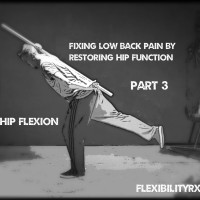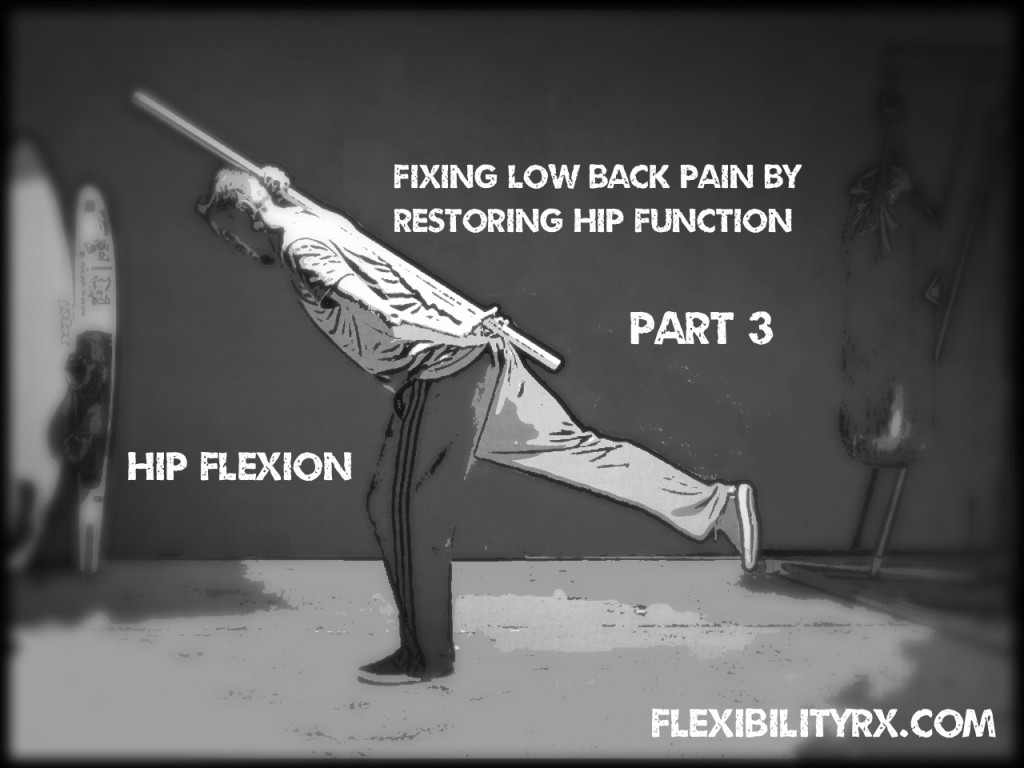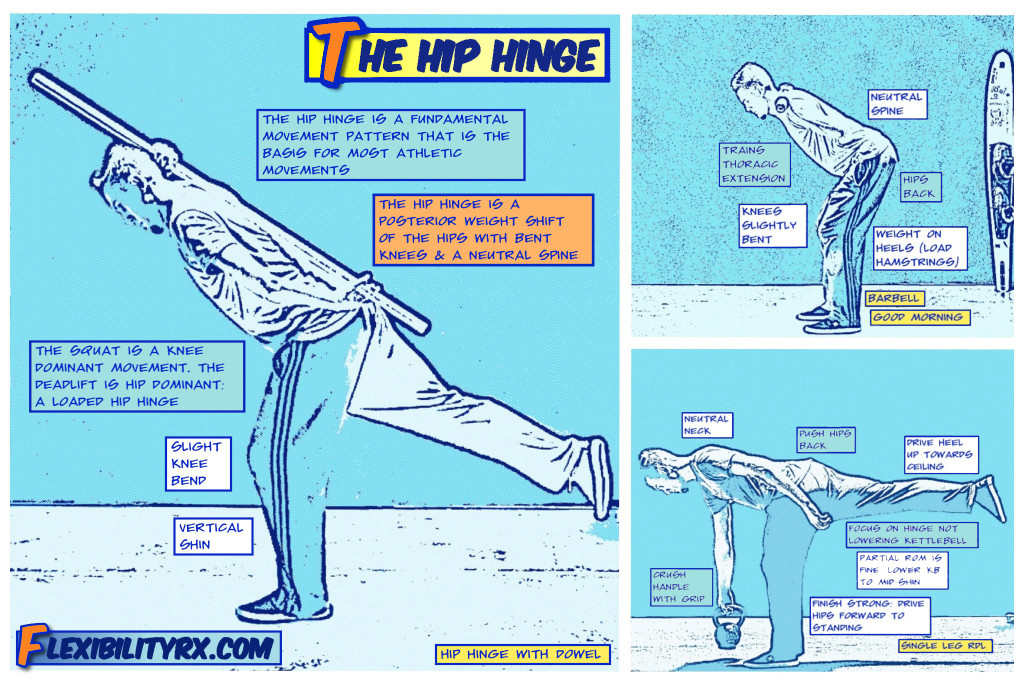
Fix Low Back Pain: Improve Hip Flexion
Fixing Low-Back Pain by Restoring Hip Function part 3
When hip movement is dysfunctional the low back moves when it should be stable (going into excessive flexion or extension). Part one of this series looked at improving hip mobility by assessing hip motion and applying traction to decompress the joint-capsule. Part two examined ways of improving hip extension and avoiding lumbar hyperextension. This third blog will look at improving hip flexion and minimizing lumbar flexion.
3 Steps to Restoring Hip Function
#1: Improve Hip Mobility
#2: Restore Hip Extension
#3: Restore Hip Flexion
#3: Poor Hip Flexion (Substituting Lumbar Flexion for Hip Flexion)
When hip flexion range of motion is limited the low back compensates by going into flexion. The butt-wink (where the low back rounds at the bottom of the squat) is often caused by poor hip flexion. While this can be a mobility issue – the focus here is learning how to separate hip movement from low-back movement. In other words, can you stabilize the low back as the hips move into flexion?
A well-rounded fitness program includes weighted carries, upper body pushing and pulling exercises (pushups, rows), and lower body pushing and pulling exercises (squats, deadlifts).
The movement pattern of the deadlift is a loaded hip hinge. Being able to flex the hips and maintain a neutral low back position is essential for athletic performance and avoiding low back pain.
A: Training Hip Flexion
It is important to avoid full range spinal flexion and spinal flexion under load. The good morning and single leg hip hinge train hip flexion with the low back in a neutral or slightly arched position. This is essential for learning to differentiate hip from low back movement.
B: Hip Flexor Strength
Weak hip flexor strength can cause patterns of lumbar flexion as a substitute for hip flexion. This great blog by Mike Reinold discusses the importance of hip flexor strength. Strong hip flexors are needed for pulling yourself into the bottom of the squat. It is also important to include hip flexion exercises past ninety degrees to strengthen the deep hip flexor (psoas). While the hip flexors are often thought of as being tight – they can be both tight and weak – destabilizing the hips and low back.
– Kevin Kula, “The Flexibility Coach” – Creator of FlexibilityRx™ – www.FlexibilityRx.com
Related Resources
Mike Reinold: Exercises to Enhance Hip Flexion (link)
Mike Boyle: Understanding & Training Hip Flexion (link)
Tags: good morning, hip flexion, hip hinge, hip hinge dowel, low-back pain, single-leg hinge


Leave A Reply (No comments so far)
You must be logged in to post a comment.
No comments yet